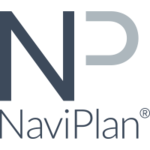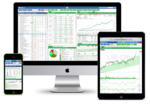Description

FactSet

NaviPlan
Comprehensive Overview: FactSet vs NaviPlan
FactSet
a) Primary Functions and Target Markets
FactSet is a financial data and software company that provides integrated data and software solutions to investment professionals. Its primary functions include:
- Financial Data and Analytics: Comprehensive data services that cover global financial information.
- Portfolio Analytics: Tools that help investment managers with performance evaluation, risk assessment, and attribution analysis.
- Research and Portfolio Management: Includes tools for equity and fixed income research, portfolio management, trade execution, and analysis.
- Quantitative Analytics: Offers a suite of tools to serve quantitative analysts and strategists.
Target Market: FactSet primarily serves buy-side portfolio managers, sell-side equity research professionals, investment bankers, risk managers, and other investment professionals involved in asset management, hedge funds, and private equity.
b) Market Share and User Base
FactSet is considered a market leader in financial data and analytics software. It competes with other major industry players like Bloomberg and Thomson Reuters. While exact market share figures might not be publicly detailed, FactSet is known to have a substantial and loyal user base.
c) Key Differentiating Factors
- Customization and Flexibility: FactSet offers customizable solutions tailored to specific institutional needs.
- Depth of Data: Known for its extensive database and analytical capabilities.
- Integration Capabilities: Seamlessly integrates with internal systems, increasing efficiency.
NaviPlan
a) Primary Functions and Target Markets
NaviPlan, a financial planning software by Advicent Solutions, is designed to support financial advisors in creating detailed financial plans for their clients. Its primary functions include:
- Goal-based Planning: Enables advisors to set and evaluate progress towards various financial goals.
- Comprehensive Financial Planning: Includes cash flow analysis, tax analysis, and estate planning.
- Scenario & Monte Carlo Analysis: Offers the ability to assess different financial scenarios and outcomes.
Target Market: Mainly targets financial advisors, insurance agents, and wealth managers who need to develop detailed financial plans for individual clients.
b) Market Share and User Base
NaviPlan is one of the widely used financial planning tools, especially in North America. The software has a strong reputation among financial advisory firms and has a significant share of the financial planning software market.
c) Key Differentiating Factors
- Deep Planning Capabilities: Known for its detailed and thorough financial planning features, more suited for comprehensive financial advising.
- User-friendly Interface: Offers an intuitive interface that simplifies complex financial planning.
- Scenario Analysis: Strong capabilities in providing what-if scenario analyses for financial planning.
Portfolio Workstation
a) Primary Functions and Target Markets
Portfolio Workstation is a tool often used by asset management firms for portfolio management and reporting. Its primary functions include:
- Portfolio Monitoring: Enables real-time tracking and analysis of portfolio performance.
- Trade Support: Provides features for trade order management and execution.
- Reporting and Compliance: Generates detailed performance reports and ensures compliance with regulatory requirements.
Target Market: Primarily targeted at asset managers, portfolio managers, and institutional investors.
b) Market Share and User Base
Portfolio Workstation's market share is not as extensively documented as FactSet or NaviPlan. It is often seen as a niche player but remains an important tool for specific users who require its distinct functionalities.
c) Key Differentiating Factors
- Focus on Institutional Needs: More targeted towards institutional portfolio management rather than retail or individual planning.
- Customization Options: Often provides customized solutions specifically designed for firms' internal processes.
- Integration with Trading Systems: Designed to work seamlessly with trading operations, distinguishing it from more analytical-focused offerings.
Summary Comparison
- FactSet is a comprehensive financial data and analytics platform with significant market presence and deep analytical capabilities, targeting investment professionals.
- NaviPlan specializes in detailed financial planning for advisors, differentiating itself with goal-based and scenario analysis features.
- Portfolio Workstation caters to asset managers for portfolio monitoring and trade execution, differing from FactSet’s broader data offerings and NaviPlan’s planning-oriented focus.
Contact Info

Year founded :
1978
Not Available
Not Available
United States
Not Available

Year founded :
Not Available
Not Available
Not Available
Not Available
Not Available
Feature Similarity Breakdown: FactSet, NaviPlan
Sure! Here’s a feature similarity breakdown for FactSet, NaviPlan, and Portfolio Workstation.
a) Core Features in Common
-
Financial Analysis and Planning:
- All three platforms offer capabilities for detailed financial analysis and planning, including budgeting and forecasting.
-
Portfolio Management:
- They provide tools for managing and analyzing investment portfolios.
-
Reporting and Documentation:
- Each software produces comprehensive reports and documentation for users to track performance and plan outcomes.
-
Integration with External Data:
- Integration abilities with external financial data sources to ensure up-to-date information is accessible.
-
Risk Assessment:
- Tools for assessing and mitigating financial risks as part of layered services.
b) User Interface Comparison
-
FactSet:
- FactSet’s interface is robust and dense, designed for high-level financial professionals. It offers a sophisticated, data-driven interface that can be somewhat overwhelming for new users but provides deep data insights and customizable dashboard features for experienced users.
-
NaviPlan:
- NaviPlan has a more straightforward and streamlined interface focused on usability for financial planning professionals. It is designed to be intuitive while providing powerful planning and scenario analysis capabilities, catering well to detailed financial planning processes.
-
Portfolio Workstation:
- Portfolio Workstation aims for a balance between data richness and usability, providing a user-friendly interface that makes it easier for portfolio managers to navigate between different modules and data sets without getting bogged down by over-complexity.
c) Unique Features
-
FactSet:
- Extensive Data Coverage: FactSet is known for its vast, comprehensive data libraries and near real-time data updates. It features unique market datasets that are highly valued by equity researchers and asset managers.
- Custom Models & Analysis: Users can build tailored models and analytics, offering significant customization for financial modeling.
-
NaviPlan:
- Detailed Scenario Planning: NaviPlan specializes in scenario planning and risk management at a granular level, allowing for extensive what-if analyses.
- User-Friendly Client Interactions: Features are designed to simplify client-advisor interactions, including easy reports and visual aid generation for consultations.
-
Portfolio Workstation:
- Focused Portfolio Rebalancing Tools: The platform offers specific tools for dynamic portfolio rebalancing which are particularly user-friendly for investment advisors.
- Custom Alerts and Monitoring: High-level customizable alerts and monitoring capabilities to manage portfolios dynamically through changing market conditions.
Overall, while these platforms share core functionalities in financial analysis and portfolio management, they differ significantly in user experience and specialized offerings that cater to their target user groups. Depending on the specific needs of the users, each platform offers unique strengths suited to different aspects of financial services.
Features

Market Data Solutions
Client Support
Portfolio Management
Analytics and Insights

Risk Management
Data Integration
Client Interaction
Financial Planning
Reporting and Compliance
Best Fit Use Cases: FactSet, NaviPlan
Certainly! Here’s a detailed breakdown of the best fit use cases for FactSet, NaviPlan, and Portfolio Workstation, including which businesses or projects might benefit most from each, scenarios for preferred usage, and how these products cater to different industries or company sizes:
a) FactSet
Types of Businesses or Projects:
- Investment Firms: FactSet is an invaluable tool for investment analysts and portfolio managers due to its robust financial data and analytics capabilities.
- Corporate Finance and Strategy Teams: Companies looking for comprehensive market insights, benchmarking, and strategic planning use FactSet for decision-making.
- Research Institutions: Academic and research entities needing access to extensive financial datasets for studies and publications.
- Investment Banking: Supports due diligence, competitive analysis, and deal structuring with its rich database and analytics.
Use in Industry Verticals or Company Sizes:
- Large Enterprises: Given the depth of its data and the sophistication of its tools, FactSet is primarily used by large, established firms that can leverage its full suite of functionalities.
- Financial Services Industry: Primarily used in asset management, hedge funds, and other financial institutions needing high-quality financial analytics and research tools.
b) NaviPlan
Preferred Scenarios:
- Financial Planning Professionals: NaviPlan is perfect for financial advisors needing detailed, goal-based financial planning tools for their clients.
- Wealth Management Firms: It supports holistic financial planning, including retirement, education funding, and estate planning.
- Individual Financial Advisors: Independent advisors use NaviPlan to provide personalized planning services to clients.
Use in Industry Verticals or Company Sizes:
- SMEs and Individual Practitioners: Smaller firms and individual advisors, particularly those focused on financial planning rather than investment management, find NaviPlan suitable due to its specific focus and ease of use.
- Insurance Industry: Used for creating comprehensive financial plans that incorporate insurance products as part of a client’s financial strategy.
c) Portfolio Workstation
When to Consider:
- Portfolio Managers and Traders: Portfolio Workstation is tailored for active portfolio management and performance analysis.
- Analysts in Investment Firms: Those needing real-time data for making investment decisions and customized reporting.
- Investment Advisors: For advisors who require tools for monitoring and reporting on client portfolios and strategies.
Use in Industry Verticals or Company Sizes:
- Medium to Large Financial Institutions: Ideal for brokerage firms and wealth management divisions within banks handling a significant number of client portfolios.
- Boutique Investment Firms: Smaller, specialized investment firms in need of robust tools for managing client portfolios across different asset classes.
d) Catering to Different Industry Verticals or Company Sizes
- FactSet serves primarily large corporations and financial service firms needing comprehensive financial data and analytics for complex investment strategies and detailed research.
- NaviPlan is tailored for financial advisors and planners, with a focus on smaller to medium-sized firms or individual practitioners prioritizing detailed client financial plans over broad investment analytics.
- Portfolio Workstation is designed for active management and would fit firms focused on dynamic portfolio management, suitable for a variety of firm sizes but with particular appeal to those who manage multiple client accounts frequently.
These tools serve distinct purposes and are chosen based on the specific needs and operational focus of financial and corporate entities. Each has carved out a niche by catering to the unique aspects of financial management, from comprehensive data analysis in FactSet to detailed financial planning in NaviPlan, and active portfolio management in Portfolio Workstation.
Pricing

Pricing Not Available

Pricing Not Available
Metrics History
Metrics History
Comparing undefined across companies
Conclusion & Final Verdict: FactSet vs NaviPlan
When evaluating financial planning and portfolio management software options like FactSet, NaviPlan, and Portfolio Workstation, it is crucial to analyze their strengths, weaknesses, and the specific needs they fulfill. Here’s a comprehensive conclusion and verdict:
Conclusion and Final Verdict
a) Best Overall Value:
The best overall value will depend heavily on the specific needs of the user and the scale of the operation. However, if one were to choose a tool that provides a broad range of features with depth in financial analytics, FactSet might be favored for its comprehensive data offerings and robust analytics capabilities. Meanwhile, NaviPlan can present substantial value for those who prioritize financial planning, and Portfolio Workstation might be the best for dedicated portfolio management.
Pros and Cons
FactSet:
-
Pros:
- Comprehensive data coverage, including financial data, analytics, and news.
- Advanced analytical tools and versatile integration capabilities.
- Excellent for investment professionals needing in-depth market analysis.
-
Cons:
- High cost, which may not be justified for smaller firms or users with limited needs.
- Steeper learning curve due to an abundance of features.
NaviPlan:
-
Pros:
- Strong focus on financial planning, with detailed cash flow and tax analysis tools.
- User-friendly interface, making it accessible for financial advisors.
- Scalable solutions suitable for both individual advisors and large institutions.
-
Cons:
- Limited in handling complex trading or portfolio analysis compared to FactSet.
- Some users may find it lacks depth in certain analytical features.
Portfolio Workstation:
-
Pros:
- Focused on delivering efficient portfolio management capabilities.
- Typically more straightforward and potentially more cost-effective for portfolio-centric operations.
- Integration with other financial tools can enhance its functionality.
-
Cons:
- May lack the comprehensive financial data analytics offered by FactSet.
- Not as strong in financial planning features as NaviPlan.
Recommendations for Users
Deciding Between FactSet, NaviPlan, and Portfolio Workstation:
-
User Needs Assessment:
- If your primary need is extensive market data and complex financial analysis, FactSet is superior.
- For those emphasizing financial planning and client-focused advising, NaviPlan is ideal.
- If the focus is on managing portfolios efficiently and cost-effectively, Portfolio Workstation is likely the best fit.
-
Budget Considerations:
- Consider the total cost of ownership, as FactSet typically requires a more substantial investment.
- NaviPlan and Portfolio Workstation may offer more budget-friendly options, particularly for smaller practices.
-
Integration and Scalability:
- Determine the compatibility of these tools with your existing systems and their ability to grow with your needs.
- Consider the level of support and training each provider offers to ease adaptation.
-
Trial and Feedback:
- If possible, take advantage of free trials or demos. Collect feedback from users within your organization to gauge satisfaction and identify potential challenges.
Ultimately, the choice between these platforms should be guided by specific business needs, budget constraints, and long-term objectives. Each product offers distinct competencies that align differently with the requirements of financial professionals and organizations.



